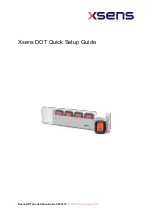
^;.i>i7j7.SEiw»^^i'Xi*^-c'
Type 1L30
’ ■> j
M t i
$
\ a
1© p?\ ,<**» g fg ??r?a
ft f r f\ M & '< H
S»
m
Vi *^£tf SBC' S £1
f*!K, ess /SS9
n ; 5 .f-"'j» *<•>.
i -
a
> ;.iaj <(£;•>'
Change information, if any, affecting this section will be found at the
rear of the manual.
Introduction
The Type 1L30 Spectrum Analyzer is a swept !.F. spectrum
analyzer
covering the frequency range from 925 M Hz to
10,500 MHz. This section presents a block diagram analysis,
then a more detailed circuit description of each major section.
tuned grid-cathode and grid-plate lines.
These lines are
tuned by shorting plungers which are moved when the RF
CENTER
FREQ control is turned. The oscillator fundamental
frequency range rs 1.125 G H z to 2.25 GHz.
Harmonics
through the 5th are used to heterodyne with the input sig
nal frequencies to provide the input frequency range- from
925 M Hz to 10.5 GHz.
Basic Description
A functional block diagram of the Type 1L30 is shown in
Fig. 3-1 and in the Diagrams section of this manual.
Signals within the RF spectrum that are applied to the RF
INPUT of the analyzer are mixed with the local oscillator
fundamental frequency and its harmonics. The converted
output frequencies are then applied through a 280 M H z low
pass filter so signals from the local oscillator that may gener
ate spurious responses are attenuated before the wide band
amplifier stage. The 150 to 250 M Hz bandpass filter response
is 100 M Hz wide, so a wide flat response is applied to the
wide band swept IF stage.
The swept frequency output from the second local oscillator
mixes with this wide (100 MHz) IF response and generates a
second IF of 75 M Hz, with a bandpass that is relatively nar
row. The frequency of the swept oscillator is synchronized
with the horizontal sweep voltage to the CRT. This provides
the calibrated dispersion and linear display of the frequency
spectrum on either side of the dial or center frequency.
The vertical deflection or amplitude of the signal indicates
relative signal strength within the observed frequency do
main.
The frequency dispersion (width) of the spectrum window is
relative to the amount by which the local oscillator frequency
is swept. This dispersion is selectable from approximately 0
kHz/cm to lO M H z /c m in a 1, 2, 5 sequence.
Calibrated attenuation (in 1 dB steps to 51 dB) is provided
by the IF attenuator. The signal output from the attenuator is
then amplified and applied to the 3rd mixer stage, where it.
is mixed with 70 M Hz and converted to a 3rd IF of 5 MHz.
The bandwidth of this 5 M Hz IF can be varied from less than
1 kHz to more than 100 kHz by the variable resolution circuit.
The signal output from the resolution amplifier is am
plified, detected and applied through a logorithmic, linear,
or square law voltage divider circuit, to the vertical ampli
fier of the plug-in oscilloscope.
Heater voltage for the oscillator is supplied by the + 1 0
volt regulated supply. The heater supply line to V41 includes
a shunt dropping resistor, R46, to reduce the voltage to 6
volts.
Lossy cables (such as W 78, W 94) are used to reduce the
VSWR (voltage standing-wave ratio) caused by slight imped
ance mismatch between circuits that may be caused by
coaxial connectors or other discontinuities.
NOTE
Lossy cables use steel w ire fo r the center conductor.
These cables are fac to ry-in s talled and used to
optim ize response flatness and sensitivity. The lossy
cable is identified by the w h ite insulating coating.
The standard 5 0 Q c o ax ial cable has clear insul
ation. Do not interchange these cables.
The mixer combines the RF input signal with the output
frequency of the local oscillator to produce an IF centered
at 200 MHz.
A peaking circuit in the mixer is used to optimize the
conversion action. Efficient mixer action depends on the di
ode bias and the local oscillator drive. Since bands 2, 3, 4
and 5 use higher order harmonics of the oscillator funda
mental frequency range of 1.125 G H z to 2.25 GHz, mixer
peaking enhances harmonic conversion.
MIXER PEAKING
control
R66
provides control over the amount of bias to the
diode
D64.
This enhances the harmonic content of the recti
fied signal and optimizes the sensitivity of the mixer at the
different harmonic frequencies being used.
The output signal from the mixer is filtered through a
280 M Hz low pass filter to reduce spurious signals above
this desired passband. This attenuation plus the 150-250 MHz
band pass filter, suppresses signals in the image frequency
band of the 200 M Hz IF (300 M Hz to 400 MHz) amplifier.
Phase
Lock Circuit
RF Section
The RF tuner section of the Type 1L30 contains the local
oscillator assembly, the 1st mixer and a 280 MHz low pass
filter. The local oscillator is a triode oscillator connected to
The phase lock circuit synchronizes the local oscillator
frequency with a stable reference frequency. This reduces
oscillator drift and incidental frequency modulation, permit
ting high resolution and narrow dispersion settings so the
signal may be evaluated.
■
I -
I:
'
I
©
Содержание 1L30
Страница 48: ...si L i y n Maintenance Type 1L30 Fig 4 15 Honeycomb assembly drcui a n d component layout 4 n ...
Страница 59: ...Fig 6 1 A Test equipment required for calibration ...
Страница 60: ... Calibration Type 1130 ...
Страница 120: ...T Y P E I L 3 0 S P E C T R U M A N A L Y Z E R ib i IF SYSTEM BLOCK DIAGRAM 9 1 9 2 ...
Страница 127: ......
















































